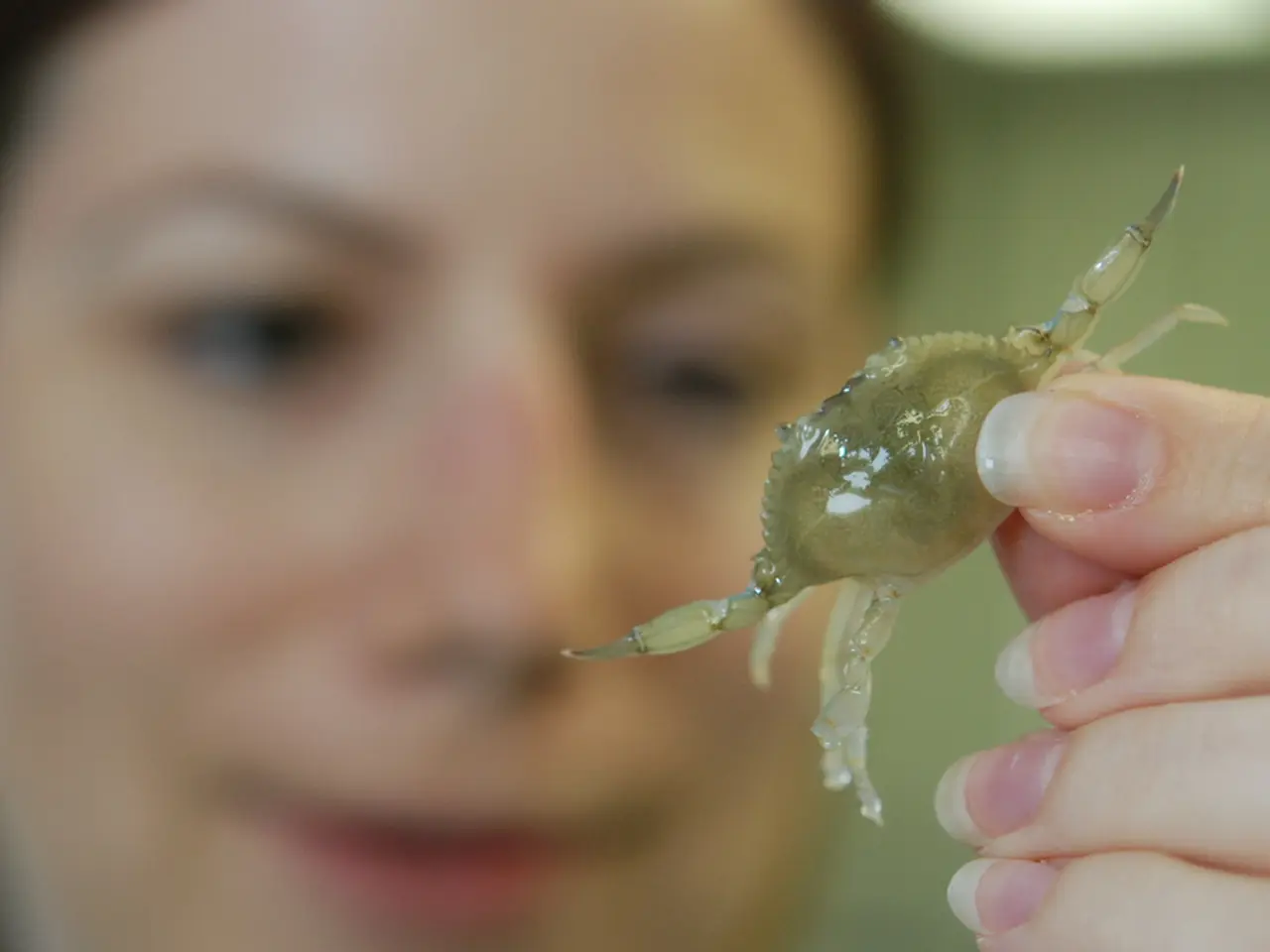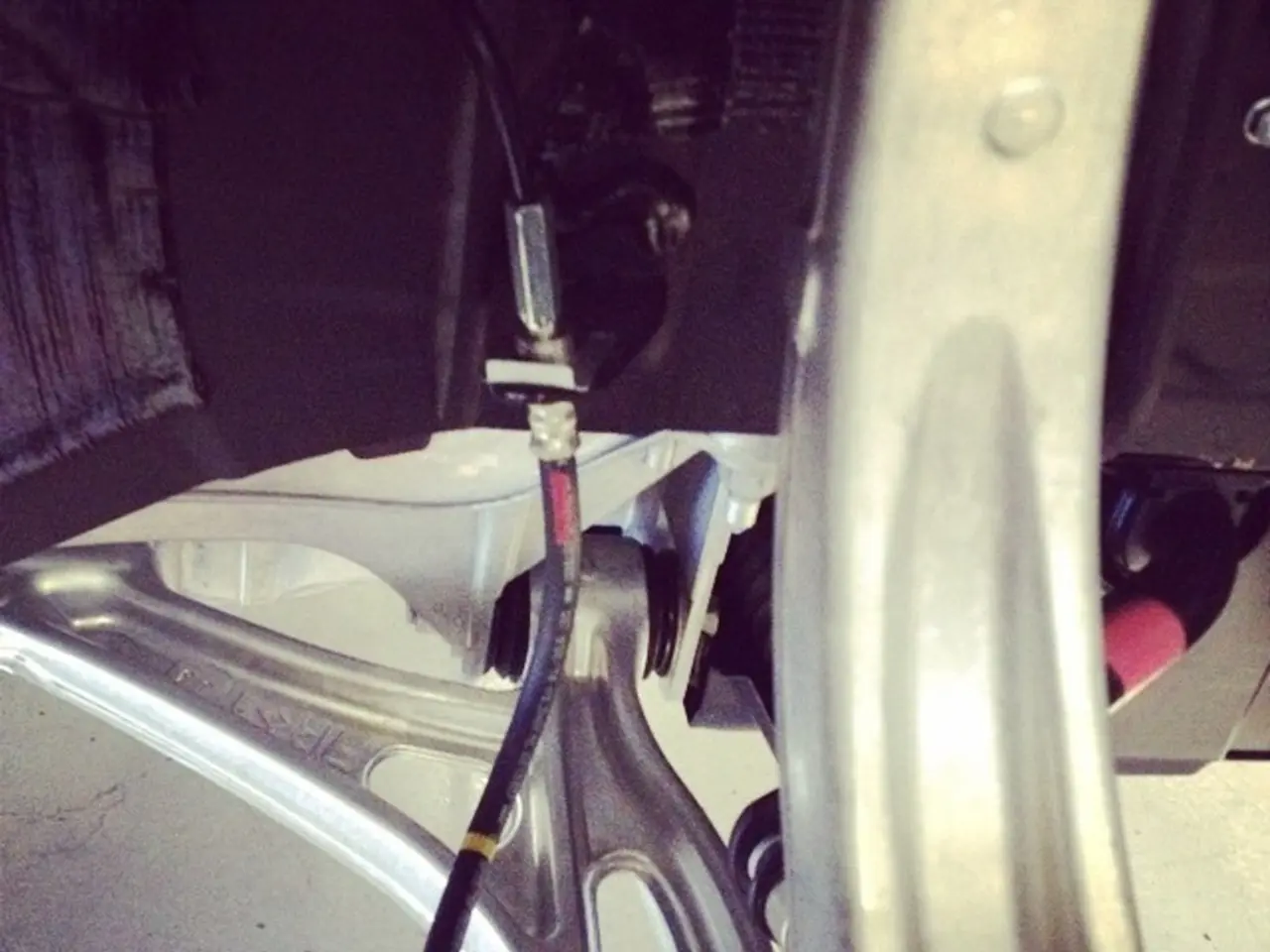Competition unfolds between mechanical crab 'Wavy Dave' and genuine crustaceans in a claw-wielding showdown
In a groundbreaking study, researchers have shed new light on the complex world of fiddler crabs and their communication strategies. The star of the show was a robot crab named "Wavy Dave," designed by Joe Wilde, a statistician and modeler in ecology and environmental science.
Insights from the Study
The study, published in the journal Proceedings of the Royal Society B Biological Sciences, revealed several fascinating insights about fiddler crab behaviour.
Behavioral Plasticity
Male fiddler crabs displayed a remarkable degree of behavioural plasticity, adjusting their signaling tactics based on the presence and actions of rival competitors. When Wavy Dave was actively waving, real male fiddler crabs increased the duration of their own claw-waving displays, indicating a heightened investment in sexual signaling [2][3].
Response to Rival Size
The response to Wavy Dave's waving was strongest when the rival had a smaller claw, implying that males are less likely to compete with larger-clawed rivals due to fear of losing or being attacked [1][3]. Conversely, males with smaller claws were more likely to intensify their signaling when competing against a smaller-clawed rival.
Speed vs. Duration
Although males extended their waving periods in response to Wavy Dave, they did not increase the speed of their waves. This strategic modulation suggests that while they amplify their signal output, they do not waste energy by speeding up unnecessarily [2][5].
Female Preference
Female fiddler crabs prefer mates with larger claws and faster wave speeds. This preference influences how males adjust their signaling strategies in the presence of rivals [3][4].
Interpretation of Signals
Males may interpret a waving rival as a signal that a female is nearby, but they wait to see the female themselves before fully committing to their signaling efforts [1][3].
Conclusion
The study with Wavy Dave underscores the complex and nuanced nature of fiddler crab communication, revealing how these animals strategically adjust their behaviour to compete effectively in dynamic environments. It underscores the importance of considering both the size and behaviour of rivals in shaping sexual signaling strategies.
Wavy Dave's participation in claw-waving contests provided valuable insights into how male crabs respond to rivals. However, the study also had its challenges, as one male crab broke off Wavy Dave's claw during a contest.
The findings suggest that male crabs change their behaviour in response to what their rivals are doing, investing more energy when they've got a greater chance of success. The study reveals the subtle ways in which these crabs adjust their behaviour to compete in a dynamic environment, investing more in signaling when it is likely to be most profitable.
While the study provides a significant step forward in understanding fiddler crab behaviour, it also highlights that there is still much to learn about how animals respond to changes in their rivals' signaling behaviour. The research team hopes that their work will inspire further exploration into this fascinating area of animal behaviour.
In the realm of entertainment, the star of the groundbreaking study on fiddler crab behavior was a robotic crab named "Wavy Dave." His participation in claw-waving contests unveiled a host of insights about the crabs' response to rivals in the field of science.
Furthermore, the study demonstrated that technology, specifically robotics, can serve as an effective tool in understanding complex animal behaviors, opening doors for future research in the entertainment and science of animal behavior.




